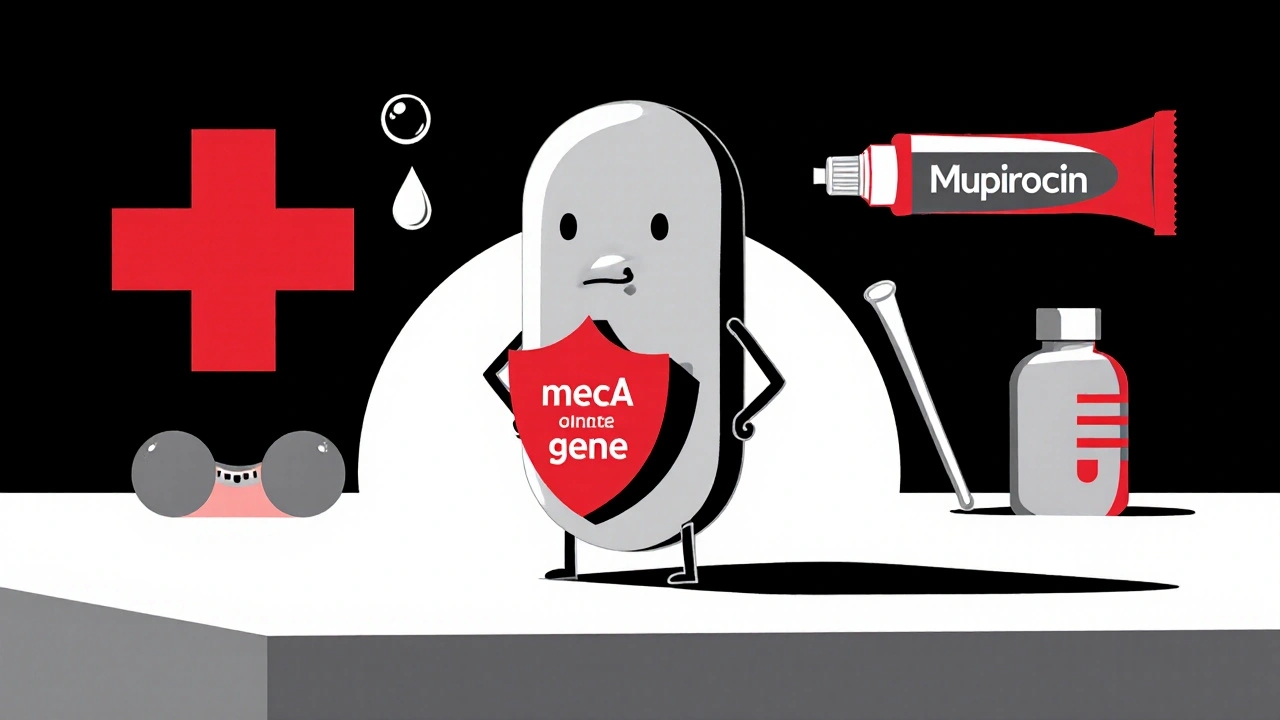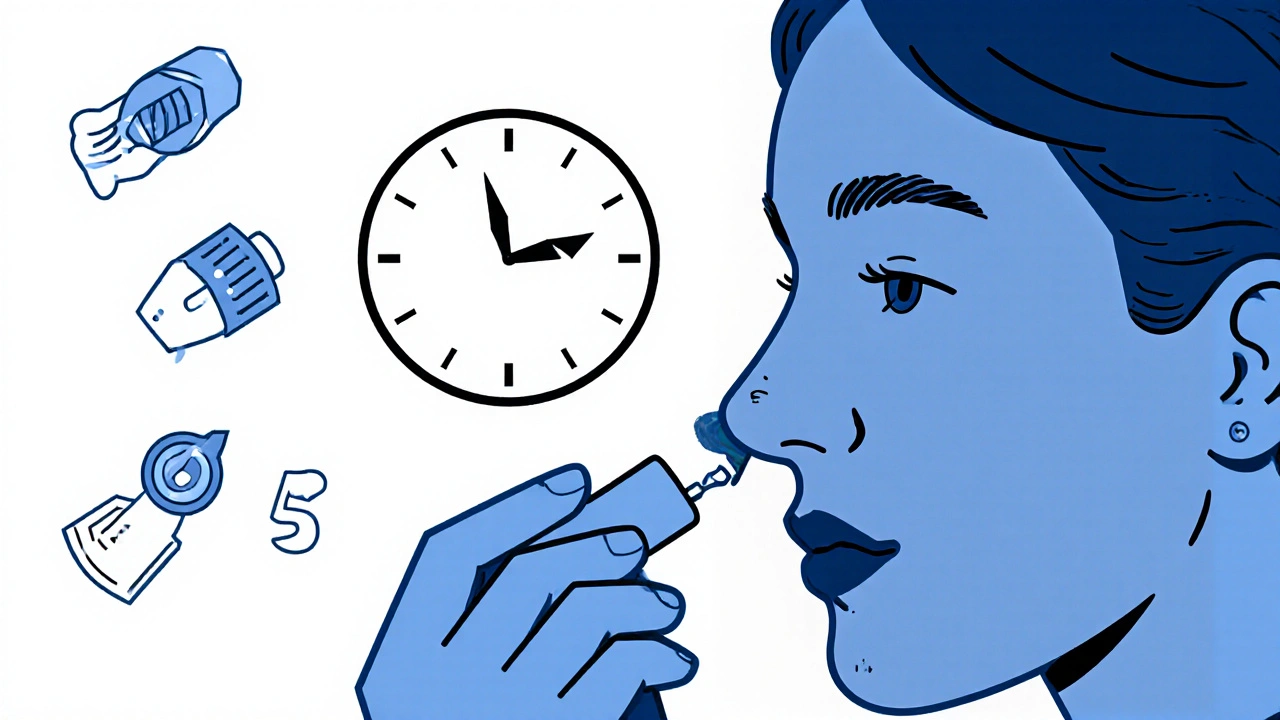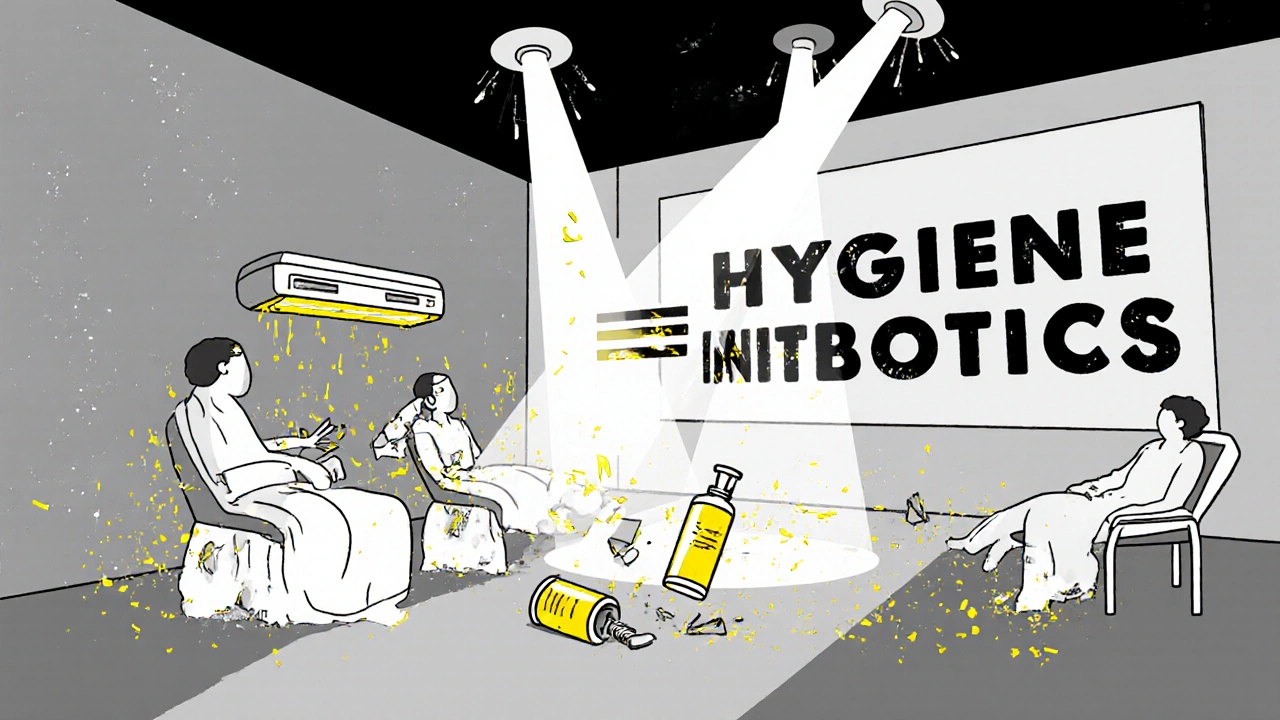How to Prevent Mupirocin Resistance and Ensure Effective Treatment
 Nov, 18 2025
Nov, 18 2025
Every year, more than 100,000 people in Australia get infected with MRSA - a stubborn staph infection that doesn’t respond to common antibiotics. Mupirocin, sold under brands like Bactroban, has been a frontline defense for years, especially for clearing MRSA from the nose. But here’s the problem: if you use it wrong, it stops working. And when mupirocin fails, the infection comes back - harder to treat, more dangerous.
Why mupirocin resistance is growing
Mupirocin isn’t a new drug. It’s been around since the 1980s. But its overuse - especially in hospitals and long-term care homes - has pushed bacteria to adapt. The resistance isn’t random. It’s caused by a single gene, mecA, that some strains of Staphylococcus aureus pick up. Once that gene is active, mupirocin can’t bind to its target anymore. The bacteria laugh it off.
Studies from the Australian Commission on Safety and Quality in Health Care show that in some hospitals, up to 30% of MRSA isolates are now resistant to mupirocin. That’s not a small number. That’s a warning sign. And it’s not just happening overseas. Hospitals in Melbourne, Sydney, and Brisbane are seeing the same trend.
Why does this happen? Three main reasons:
- Using mupirocin for too long - like applying it for 10 days when 5 is enough
- Using it in people who don’t need it - like healthy carriers without active infection
- Not following up with culture tests to confirm the infection is gone
When mupirocin should - and shouldn’t - be used
Mupirocin is a topical antibiotic. That means it’s meant for skin and nasal surfaces. It’s not for wounds, burns, or systemic infections. Using it for anything else is a waste - and it fuels resistance.
There are only two approved, evidence-based uses:
- Nasal decolonization for patients with active MRSA infection or those entering high-risk surgery (like heart or joint replacement)
- Topical treatment for impetigo or small, localized skin infections caused by susceptible staph
That’s it. No more. No less.
Here’s what doesn’t work:
- Using it on family members of MRSA patients as a preventive - unless they’re confirmed carriers
- Applying it daily for weeks to "keep staph away"
- Using it in place of hand hygiene or environmental cleaning
One nurse in a Melbourne hospital told me she used to give mupirocin to every patient admitted with a wound. Now, she only prescribes it after a nasal swab confirms MRSA. The infection rate dropped by 40% in six months.
How to use mupirocin correctly
Correct use isn’t about how strong the dose is. It’s about precision.
For nasal decolonization:
- Apply a pea-sized amount of ointment inside each nostril, twice a day
- Use it for exactly five days - no more, no less
- Don’t touch the tube tip to your nose. Use a clean applicator or finger
- Wash your hands before and after
For skin infections:
- Clean the area with mild soap and water
- Apply a thin layer over the affected skin, three times a day
- Cover with a sterile dressing if needed
- Continue for 7-10 days, or until the infection clears - but never beyond 10 days
And here’s the rule most people miss: Always follow up with a test. If you’re treating MRSA, get a repeat nasal swab 1-2 weeks after finishing mupirocin. If it’s still positive, you’re dealing with resistance. Switching to another antibiotic like chlorhexidine baths or oral agents (like doxycycline or trimethoprim-sulfamethoxazole) becomes necessary.

Alternatives to mupirocin
When mupirocin fails, you need backup. And there are options - but they’re not as simple as slapping on another cream.
For nasal decolonization, chlorhexidine gluconate (CHG) nasal swabs are now recommended in many Australian hospitals. CHG is less likely to cause resistance and can be used longer. Some clinics combine it with mupirocin for the first few days, then switch to CHG alone.
For skin infections, topical antiseptics like iodine-based solutions or silver dressings can help. Oral antibiotics like clindamycin or linezolid are used for deeper infections - but only after lab testing confirms sensitivity.
Don’t use tea tree oil, honey, or other "natural" remedies as replacements. They might feel good, but they don’t reliably kill MRSA. And relying on them delays real treatment.
Stopping the spread starts with hygiene
Mupirocin won’t save you if you keep spreading MRSA. Antibiotics treat the bug. Hygiene stops the spread.
Here’s what works:
- Wash hands with soap and water for at least 20 seconds - especially after touching wounds or bandages
- Use alcohol-based hand sanitizer when soap isn’t available
- Don’t share towels, razors, or clothing
- Clean surfaces like doorknobs, phones, and bedrails daily with disinfectant
- Wear gloves when caring for someone with an open wound
One study in a Sydney aged care facility showed that adding daily chlorhexidine body washes for residents cut MRSA transmission by 60%. That’s more than any antibiotic ever achieved alone.

What doctors and nurses need to do
Prescribers are part of the problem - and the solution.
Too many GPs still prescribe mupirocin as a "quick fix" for skin rashes or minor boils. That’s not evidence-based. The Therapeutic Guidelines (TGA) clearly state: mupirocin should only be used after confirmation of MRSA.
Here’s what healthcare workers should do:
- Test before treating - never guess
- Limit mupirocin to 5 days for nasal use, 10 days for skin
- Document the reason for prescribing it
- Report resistant cases to local health authorities
- Train staff on proper application and hygiene
Hospitals with antimicrobial stewardship programs - teams that monitor antibiotic use - have seen resistance rates drop by half in under two years.
What patients can do
You’re not powerless. You can protect yourself and others.
- Ask: "Is this really MRSA? Can we test first?"
- Ask: "How long should I use this?" - and stick to the time
- Ask: "What happens if it doesn’t work?" - know the next steps
- Don’t save leftover mupirocin for "next time" - it loses effectiveness and can spread resistant strains
- Report any rash, itching, or worsening symptoms - that could mean resistance or allergy
One man in Geelong used his leftover mupirocin on a cut after a gardening injury. The wound got worse. A culture showed MRSA - resistant to mupirocin. He ended up in hospital with a deep infection. He didn’t know the ointment had expired. He didn’t know it was meant for his nose, not his leg.
What’s next for mupirocin
Mupirocin isn’t going away. But its role is shrinking. Newer agents like retapamulin and ozenoxacin are being studied for skin infections, but they’re not yet widely available in Australia. The real future lies in prevention - not replacement.
Hospitals are moving toward routine MRSA screening before surgery. Some are using probiotic nasal sprays to crowd out staph. Others are testing UV light disinfection for patient rooms. These aren’t sci-fi ideas. They’re being used now.
For now, the best tool against resistance is still the oldest one: using antibiotics only when necessary, and using them exactly right.
Can mupirocin be used for acne?
No. Mupirocin is not effective against acne-causing bacteria like Propionibacterium acnes. It’s designed for staph infections, particularly MRSA. Using it for acne won’t help and increases the risk of resistance. Stick to acne treatments like benzoyl peroxide, retinoids, or prescribed antibiotics like doxycycline.
How long does mupirocin last once opened?
Once opened, mupirocin ointment should be used within 10 days. After that, the active ingredient degrades, and the risk of contamination rises. Never use expired or old tubes - even if they look fine. Throw them away.
Can I use mupirocin if I’m pregnant?
Mupirocin is considered low-risk during pregnancy when used topically and as directed. It’s not absorbed significantly into the bloodstream. But always consult your doctor before use. Avoid using it for long periods or on large areas of skin.
What are the signs mupirocin isn’t working?
If your skin infection gets bigger, more red, or starts oozing pus after 3-4 days of treatment - or if your nasal swab is still positive after completing the full course - mupirocin may not be working. This could mean resistance. Contact your doctor immediately. Don’t keep using it.
Is mupirocin available over the counter in Australia?
No. Mupirocin is a prescription-only medication in Australia. It’s not sold in pharmacies without a doctor’s note. This restriction exists to prevent misuse and slow the rise of resistance. Never buy it online without a prescription - it could be fake or contaminated.
If you’re using mupirocin, treat it like a scalpel - not a hammer. Use it precisely, for the right reason, for the right time. That’s how you protect yourself, your family, and the future of antibiotics.

Franck Emma
November 19, 2025 AT 03:33This is why we’re losing the war on superbugs. They don’t care about your prescriptions-they laugh while you’re scrubbing your hands like a nun at confession. Mupirocin? That’s not medicine anymore-it’s a placebo with a price tag. And now it’s useless. We’re all just rearranging deck chairs on the Titanic while bacteria throw raves in the ICU.
Sandi Moon
November 19, 2025 AT 13:39One cannot help but observe the alarming confluence of medical negligence and institutional complacency evident in the widespread misuse of topical antimicrobials. The notion that a single gene-mecA-could so thoroughly subvert decades of clinical protocol speaks not to bacterial ingenuity, but to the intellectual bankruptcy of modern healthcare policy. One must ask: Who authorized this pharmacological free-for-all? And more pertinently, who profits from it?
Chris Vere
November 20, 2025 AT 07:34the thing is people treat antibiotics like magic spray you put on anything that looks angry but bacteria dont care about our intentions they just keep evolving and the truth is we dont really have a plan beyond hoping the next drug works longer than the last one
maybe we should spend less time finding new drugs and more time just washing our hands properly
its boring but it actually works
Daisy L
November 21, 2025 AT 04:29AMERICA ISN’T LOSING THIS FIGHT-WE’RE JUST TIRED OF BEING TOLD TO WAIT FOR A SWAB WHEN OUR KID HAS A PUSY BOIL!!
THEY WANT US TO WAIT? WAIT FOR WHAT? FOR MRSA TO SPREAD TO THE WHOLE FAMILY??
THEY WANT PRECISION? I WANT A DOCTOR WHO SHOWS UP BEFORE MY SON’S WOUND LOOKS LIKE A MAP OF THE MOON!!
AND YES-I USED THE LEFTOVER TUBE. SO WHAT? IT WAS STILL WHITE AND SMELLED LIKE MEDICINE!!
THEY WANT TO TAKE AWAY OUR LAST LINE OF DEFENSE? THEN GIVE US SOMETHING BETTER-DON’T JUST TELL US TO WASH OUR HANDS LIKE WE’RE IN KINDERGARTEN!!
Anne Nylander
November 22, 2025 AT 21:54okay real talk-i used mupirocin on my knee after i scraped it on gravel and it totally worked for like 3 days but then it got worse and i felt so dumb
but now i know better! i asked my dr for a swab and they were like "good call" and gave me a different cream
you guys are right-we gotta stop winging it
and yes i threw out the old tube lol
you got this! testing is cool and so are clean hands!!
Corra Hathaway
November 24, 2025 AT 04:41soooo... we're basically saying antibiotics are like Tinder? Use 'em once, get burned, never trust again? 😅
also-chill on the tea tree oil, but also... why are we still using 40-year-old drugs like they're gold-plated silverware? 🤔
also also-someone please tell me why I can't get a nasal probiotic spray at CVS like I can get a CBD gummy? 🙃
we need better tools. and maybe a nap. and definitely more hand sanitizer.
PS: my grandma still washes her hands like she's defusing a bomb. she's 89 and hasn't had MRSA. Coincidence? I think not. 💪🧼